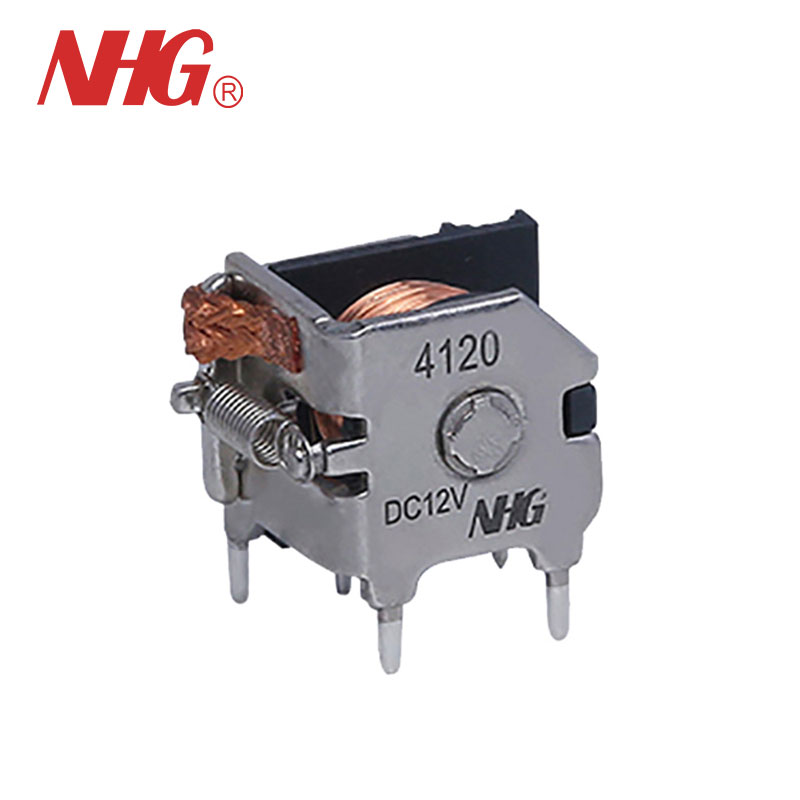What Are Automotive Relays and Why Are They Essential for Modern Vehicles?
2025-01-07
When we think about cars and their complex electrical systems, it’s easy to focus on high-tech components like infotainment systems, GPS navigation, or advanced safety features. However, behind these modern innovations lies a crucial yet often overlooked component: automotive relays. These small devices play a key role in ensuring that your vehicle’s electrical systems work smoothly and efficiently.
But what exactly are automotive relays, and why are they so essential for the performance and safety of modern vehicles?
In this blog, we’ll explore the function of automotive relays, their different types, and why they are indispensable in modern vehicles.
What Is an Automotive Relay?
At its core, an automotive relay is an electrically operated switch used to control a circuit in a vehicle. It allows a low-power electrical signal to control a high-power electrical circuit, essentially acting as an intermediary between the two. Relays are most commonly used in situations where a small amount of current needs to control a larger current, which is typical in many of a car’s electrical systems.
For example, a relay might be used to control the power to headlights, windshield wipers, or the starter motor. The relay receives a signal from a low-power source (such as a switch or a sensor), and it uses that signal to complete a higher-power circuit, powering the system that needs it.
How Do Automotive Relays Work?
Automotive relays operate on the principle of electromagnetism. Here’s a simplified breakdown of how they work:
1. Input Signal:
When a signal is sent to the relay, typically through a switch or control module, it powers an electromagnet within the relay.
2. Electromagnetic Field:
The electromagnet creates a magnetic field that pulls a metal contact within the relay, closing the circuit and allowing electricity to flow through the high-power circuit.
3. High-Power Circuit Activation:
As a result, the connected component, such as a motor or light, receives the power it needs to function. When the signal stops, the electromagnet loses its power, and the contact inside the relay opens, interrupting the current flow and turning off the component.
This simple but effective system allows various high-power systems in the car to be controlled with a small, low-power signal, ensuring both safety and efficiency.
Why Are Automotive Relays Important?
Automotive relays are critical for several reasons, and their importance cannot be overstated:
1. Protecting Sensitive Electronics:
Modern vehicles are filled with advanced electronic systems, including computers, sensors, and control modules. Automotive relays help protect these sensitive components by ensuring that they only deal with low-power signals. Relays prevent high-power circuits from directly interacting with delicate electronics, which could otherwise cause damage.
2. Efficient Power Distribution:
Relays ensure that high-power electrical components receive the energy they need without overloading the vehicle’s wiring system. By using a relay, only the necessary power is drawn to the system, reducing the risk of overheating and preventing potential system failures. This results in more efficient and stable power distribution throughout the vehicle.
3. Improved Safety:
Automotive relays contribute to vehicle safety by allowing electrical systems to function properly. For example, relays control critical systems such as the starter motor, airbags, and headlights. A malfunction in any of these circuits could jeopardize the vehicle’s safety, but a properly functioning relay ensures that these systems operate as intended, even under heavy use.
4. Longevity and Reliability:
Using relays in vehicles helps extend the lifespan of components by preventing them from being exposed to excessive current. Since relays handle high currents in a controlled manner, they help avoid wear and tear on the vehicle’s electrical systems, contributing to the overall longevity of the car.
5. Simplified Circuit Design:
Automotive relays simplify the wiring and circuit design within a vehicle by allowing for central control of various components. Instead of each system requiring its own dedicated switch or wiring, a relay can manage multiple systems with minimal complexity, reducing the overall size and cost of the vehicle's wiring harness.
Types of Automotive Relays
There are several types of automotive relays, each designed for different applications within a vehicle. Some common types include:
1. SPST (Single Pole, Single Throw) Relay:
The most basic type of relay, an SPST relay, has one input and one output. It either allows current to flow or prevents it, making it ideal for simple on/off functions such as turning lights on and off.
2. SPDT (Single Pole, Double Throw) Relay:
An SPDT relay has a single input and two possible outputs. It allows current to flow to one of two circuits, making it useful for applications where one relay needs to control multiple functions. For example, a SPDT relay might switch between low and high beam headlights.
3. DPDT (Double Pole, Double Throw) Relay:
A DPDT relay has two input circuits and two outputs, allowing it to control two separate high-power circuits simultaneously. This type of relay is often used in more complex systems that need to manage multiple components or systems at once.
4. Automotive Timer Relay:
These relays are designed to control systems that require a time delay, such as windshield wipers or turn signals. They allow the system to remain on for a specific period before automatically shutting off.
5. Latching Relay:
A latching relay, unlike standard relays, maintains its position even when the input signal is removed. This is ideal for applications where a system needs to stay on or off without continuous power, such as locking or unlocking a vehicle's door.
Common Applications of Automotive Relays
Automotive relays are used in a variety of applications in modern vehicles. Some of the most common include:
1. Headlights and Taillights:
Relays are used to control the power going to the vehicle’s headlights and taillights. This ensures that they turn on and off reliably and that the circuits are not overloaded.
2. Starter Motor:
The starter motor relies on relays to provide the high-current signal needed to start the vehicle. A malfunctioning relay can prevent the engine from starting or cause issues with ignition.
3. Windshield Wipers:
Automotive relays are used to control the power supply to the windshield wiper motor, allowing drivers to adjust the wiper speed and control the wiper functions based on different weather conditions.
4. Air Conditioning System:
Relays help control the operation of the air conditioning compressor, allowing the system to turn on and off efficiently based on temperature settings.
5. Fuel Pump:
Relays are used to activate the fuel pump, ensuring that fuel is delivered to the engine as needed during operation. Malfunctions in the relay can lead to issues with engine performance or starting.
6. Power Windows and Seats:
Relays control the power supply to the electric windows and adjustable seats in the vehicle, allowing for smooth operation of these systems.
Signs of a Faulty Automotive Relay
Since automotive relays play such an essential role in your vehicle’s electrical systems, it’s important to recognize when one is malfunctioning. Some signs of a faulty relay include:
- Non-functioning electrical components: If a component such as your headlights or power windows stop working without any other obvious issues, the relay may be to blame.
- Clicking sounds: If you hear a clicking noise when trying to use certain electrical systems, it could indicate a malfunctioning relay trying to engage.
- Intermittent operation: If the electrical component works sporadically or fails to turn on at all, the relay may be experiencing a failure.
Conclusion: Automotive Relays – Small Components, Big Impact
While automotive relays may seem like small and simple devices, they play a crucial role in ensuring that your vehicle’s electrical systems operate safely and efficiently. From controlling headlights to powering the starter motor, relays enable high-power circuits to be activated with minimal effort, improving both the safety and performance of modern vehicles.
As vehicle technology continues to evolve, the role of relays in managing complex electrical systems becomes even more important. Understanding how automotive relays work and recognizing their importance can help ensure that your vehicle continues to run smoothly, providing a reliable and safe driving experience.



